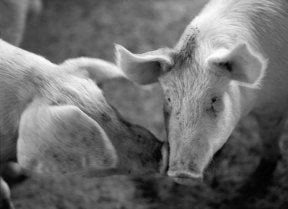The dwindling hog industry has caused a reaction from the federal government. Canadian pork producers will be paid $50 million to kill off 150,000 of their pigs by the fall as the industry continues to try and fight against economic collapse.
In an attempt to cull the swine breeding herd by 10 per cent, pigs are being killed at slaughter plants and on farms.
Much of the meat will be used for pet food or will be disposed of, with approximately 25 per cent going to more than 670 Canadian food banks across the country.
Rod Snyder, owner of Ponoka Meat Processors, believes that although the cull may help some producers it still is not a complete solution.
“If anything it will cut the supply of hogs and drive the demand up,” said Snyder. “It’s more of a bail out package to help producers get out with dignity rather than bankruptcy.”
Hog producers are facing a number of obstacles and frustrations are rising. Producers are facing low prices, increasing feed costs and the high value of the Canadian dollar.
Hog producers will also soon face new country-of-origin labeling rules for meat products in the United States that will be executed later this year.
Martin Rice, executive director of the Canadian Pork Council recognizes that hog industry has been facing many devastating trials.
“The value that the market is providing to hog farmers for their breeding animals has fallen to virtually nothing,” said Rice in a press release. “It is due to the economic collapse of the industry. These are the farms that families have spent decades building up. We cannot see relief coming. It is agonizing for them. It takes a toll.”
Farmers who are taking part in the cull are encouraged to take their pigs to approved slaughter plants to ensure that the animals will be treated in a humane way. But producers still have the option of slaughtering their animals on their own farm.
“We want to minimize the amount of on-farm euthanizing,” said Rice. “Before we would approve that application we would need to know how it was going to be done—that it was going to be done humanely and in an environmentally sound way.”
Producers who would like to take part in the hog cull can apply for federal compensation payments until the end of August. Farmers who qualify for compensation must be willing to agree to slaughter an entire breeding barn of hogs and to not restock the barn for another three years. Farmers have until November to complete the cull.
Approximately 50,000 hogs have been killed and are estimating about 100,000 more to come by the fall.
